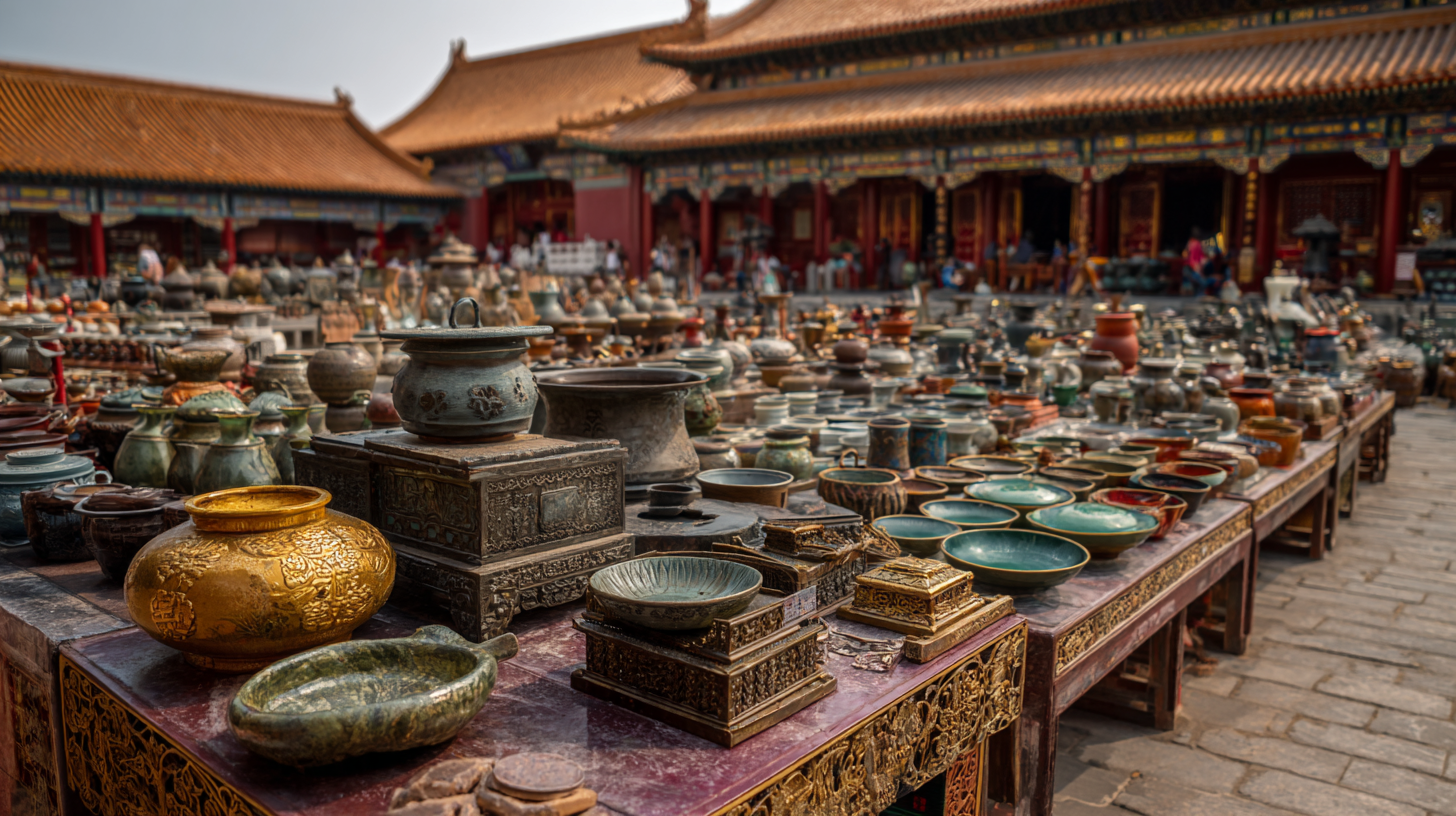


In today's global marketplace, sourcing high-quality products from China has become a crucial strategy for buyers aiming to remain competitive. According to a report by Statista, China's share of global manufacturing output was over 30% in 2021, underlining its dominant role in the supply chain. With the continuous evolution of technology and shifting consumer demands, understanding the nuances of sourcing from China is essential for global buyers seeking to optimize their procurement processes.

Furthermore, a survey conducted by McKinsey & Company indicates that 75% of executives believe that effective sourcing strategies significantly enhance their companies' market positions. As we delve into this comprehensive guide, we will explore practical steps and considerations for identifying and procuring the best products from China, ensuring that buyers can leverage this vast market to their advantage.
Sourcing products from China presents both opportunities and challenges for global buyers. Understanding key strategies when navigating this vast market is crucial for success. According to a recent report by MarketLine, nearly 38% of global retailers are currently sourcing their products from China, reflecting the nation’s dominance in global supply chains. This statistic emphasizes the need for global buyers to adopt informed sourcing strategies that not only leverage cost advantages but also ensure product quality and compliance with international standards.
When engaging with Chinese suppliers, buyers should consider the implications of quality control and factory audits. A survey by Statista found that 22% of global sourcing managers ranked quality issues as their top concern, underscoring the importance of rigorous vetting processes. Implementing an effective sourcing strategy involves not only negotiating favorable terms but also establishing strong relationships with manufacturers. Buyers can achieve this by conducting factory visits and ensuring that suppliers adhere to ethical standards, thus mitigating risks associated with quality and compliance in the long term.
Identifying reliable suppliers is crucial for global buyers looking to source quality products from China. In the rapidly evolving market of 2024, it is essential to differentiate between manufacturers and suppliers, as each plays a distinct role in the supply chain. Manufacturers produce the goods, while suppliers often act as intermediaries, connecting buyers to the production facilities. Assessing the credentials of potential suppliers involves examining their certifications, production capabilities, and compliance with international quality standards.
In addition to traditional evaluations, leveraging AI technology can significantly enhance the supplier vetting process. By utilizing AI to analyze contract data and supplier practices, buyers can ensure that they engage with trustworthy partners who prioritize supply chain integrity. This approach not only minimizes risks associated with subpar quality but also enables buyers to maintain a competitive edge in sourcing top-quality products, such as static var generators and micro switches, that are essential in today's market. Choosing suppliers who demonstrate rigorous quality assurance measures and established reputations will lead to more successful procurement endeavors.
In today’s global market, leveraging trade platforms is essential for sourcing high-quality products from China. Online resources such as Alibaba, Global Sources, and Made-in-China have revolutionized the way buyers connect with suppliers. According to a report by Statista, e-commerce sales in China are projected to reach $2.8 trillion by 2025, highlighting the significant opportunities for global buyers. These platforms not only facilitate easy access to millions of manufacturers but also offer tools for verifying supplier credentials, ensuring that you source products safely and efficiently.
Tip: When using trade platforms, always check for verified suppliers and read customer reviews to gauge reliability. Utilizing trade insurance offered by these platforms can also secure your transactions, providing an extra layer of protection against potential scams.

Beyond just finding suppliers, these platforms help streamline the sourcing process with advanced search filters and category sorting. A recent survey indicated that 75% of buyers prefer sourcing from platforms that provide comprehensive product information and competitive pricing, making it crucial to leverage these resources effectively.
Tip: Consider attending trade fairs and exhibitions that align with your sourcing needs; many of these are now virtual, providing greater accessibility to a wider range of suppliers without the need for extensive travel.
When sourcing products from China, ensuring quality control is paramount for global buyers. A report from the International Trade Administration highlights that approximately 50% of products imported from China face some form of compliance issue. This statistic underscores the necessity of implementing rigorous quality control measures. Buyers should prioritize sourcing suppliers who utilize internationally recognized quality certification standards, such as ISO 9001, to mitigate risks associated with product defects.
In addition to certification, establishing a robust inspection protocol is crucial. According to a survey by Statista, more than 20% of businesses cite quality assurance as their top concern when dealing with Chinese manufacturers. Conducting pre-shipment inspections can identify potential issues before products reach foreign markets, saving both time and money. Utilizing third-party inspection services helps ensure that products meet specified quality benchmarks, further enhancing buyer confidence in the sourcing process. By taking these vital steps, global buyers can navigate the complexities of product compliance and foster successful international trade relationships.
| Product Category | Key Compliance Standards | Quality Control Methods | Average Price Range (USD) | Lead Time (Days) |
|---|---|---|---|---|
| Electronics | CE, FCC, RoHS | Functional Testing, Sample Inspection | 20 - 150 | 30 - 45 |
| Textiles | Oeko-Tex, CPSIA | Fabric Testing, Colorfastness Tests | 5 - 80 | 15 - 30 |
| Toys | ASTM F963, EN71 | Safety Testing, Age Grading Assessments | 10 - 60 | 20 - 40 |
| Furniture | ANSI/BIFMA, EPA TSCA | Durability Testing, Material Certifications | 50 - 300 | 30 - 60 |
| Kitchenware | FDA, LFGB | Material Testing, Performance Testing | 10 - 100 | 15 - 25 |
Effective communication is pivotal in navigating the complexities of sourcing products from China. When engaging with Chinese suppliers, understanding cultural nuances can significantly enhance negotiations. One key strategy is to adopt an indirect communication style. In Chinese culture, direct confrontation is often seen as disrespectful. Therefore, using subtlety and diplomacy can foster a more positive dialogue. For instance, instead of outright rejecting a proposal, it may be more effective to express concerns diplomatically, thereby maintaining harmony in the negotiation process.
Building relationships is another essential facet of successful negotiations in China. The concept of “guanxi” emphasizes the importance of networking and trust in business dealings. Taking the time to establish a personal rapport with your suppliers can lead to more favorable terms and conditions. Engaging in friendly conversations, acknowledging cultural customs, or participating in business lunches can create a bond that facilitates smoother negotiations. By prioritizing relationship-building, global buyers can ensure that their interactions are not merely transactional but are enriched with mutual respect and understanding, ultimately paving the way for successful sourcing outcomes.
